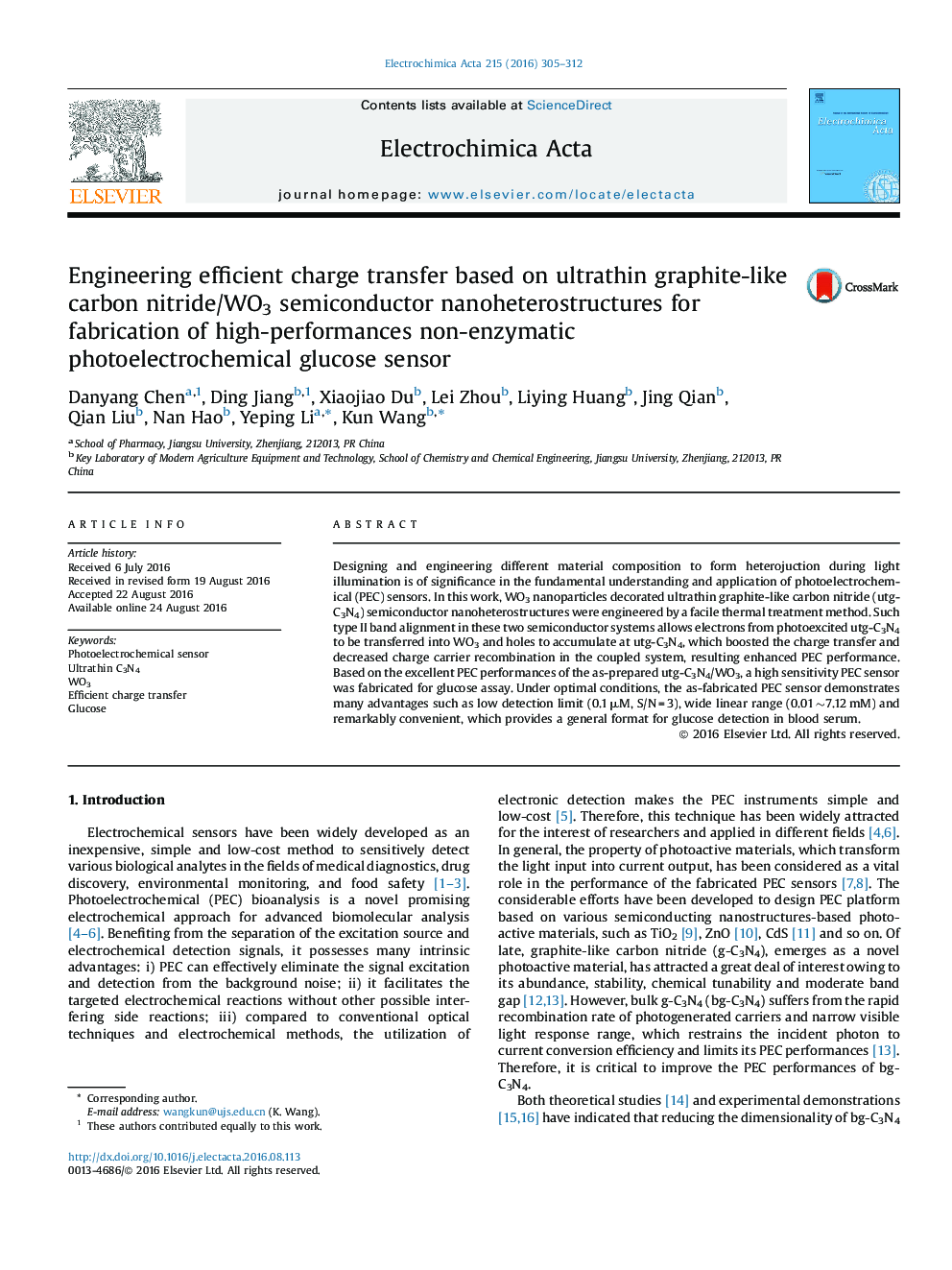| Article ID | Journal | Published Year | Pages | File Type |
|---|---|---|---|---|
| 6473147 | Electrochimica Acta | 2016 | 8 Pages |
Designing and engineering different material composition to form heterojuction during light illumination is of significance in the fundamental understanding and application of photoelectrochemical (PEC) sensors. In this work, WO3 nanoparticles decorated ultrathin graphite-like carbon nitride (utg-C3N4) semiconductor nanoheterostructures were engineered by a facile thermal treatment method. Such type II band alignment in these two semiconductor systems allows electrons from photoexcited utg-C3N4 to be transferred into WO3 and holes to accumulate at utg-C3N4, which boosted the charge transfer and decreased charge carrier recombination in the coupled system, resulting enhanced PEC performance. Based on the excellent PEC performances of the as-prepared utg-C3N4/WO3, a high sensitivity PEC sensor was fabricated for glucose assay. Under optimal conditions, the as-fabricated PEC sensor demonstrates many advantages such as low detection limit (0.1 μM, S/N = 3), wide linear range (0.01 â¼Â 7.12 mM) and remarkably convenient, which provides a general format for glucose detection in blood serum.
